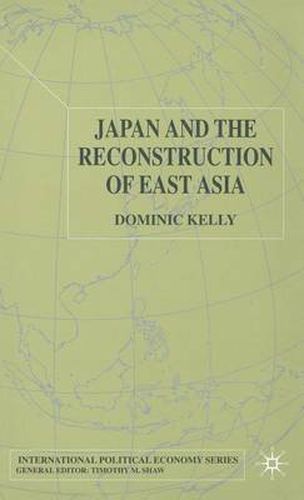Readings Newsletter
Become a Readings Member to make your shopping experience even easier.
Sign in or sign up for free!
You’re not far away from qualifying for FREE standard shipping within Australia
You’ve qualified for FREE standard shipping within Australia
The cart is loading…






This title is printed to order. This book may have been self-published. If so, we cannot guarantee the quality of the content. In the main most books will have gone through the editing process however some may not. We therefore suggest that you be aware of this before ordering this book. If in doubt check either the author or publisher’s details as we are unable to accept any returns unless they are faulty. Please contact us if you have any questions.
Dominic Kelly has written a fascinating study of Japanese policies designed to lead to the reconstruction of East Asia. He presents a detailed picture of Japanese activity in East Asia in the areas of production, finance, security and ‘knowledge’, and maps out the historical context upon which this activity rests. In doing so, Kelly sheds light on the increasingly powerful but imperfectly understood phenomenon of regionalism. He goes on to identity the major fault line situated beneath both theoretical accounts of Japanese regionalism and ‘real world’ predictions of its success or failure.
$9.00 standard shipping within Australia
FREE standard shipping within Australia for orders over $100.00
Express & International shipping calculated at checkout
This title is printed to order. This book may have been self-published. If so, we cannot guarantee the quality of the content. In the main most books will have gone through the editing process however some may not. We therefore suggest that you be aware of this before ordering this book. If in doubt check either the author or publisher’s details as we are unable to accept any returns unless they are faulty. Please contact us if you have any questions.
Dominic Kelly has written a fascinating study of Japanese policies designed to lead to the reconstruction of East Asia. He presents a detailed picture of Japanese activity in East Asia in the areas of production, finance, security and ‘knowledge’, and maps out the historical context upon which this activity rests. In doing so, Kelly sheds light on the increasingly powerful but imperfectly understood phenomenon of regionalism. He goes on to identity the major fault line situated beneath both theoretical accounts of Japanese regionalism and ‘real world’ predictions of its success or failure.